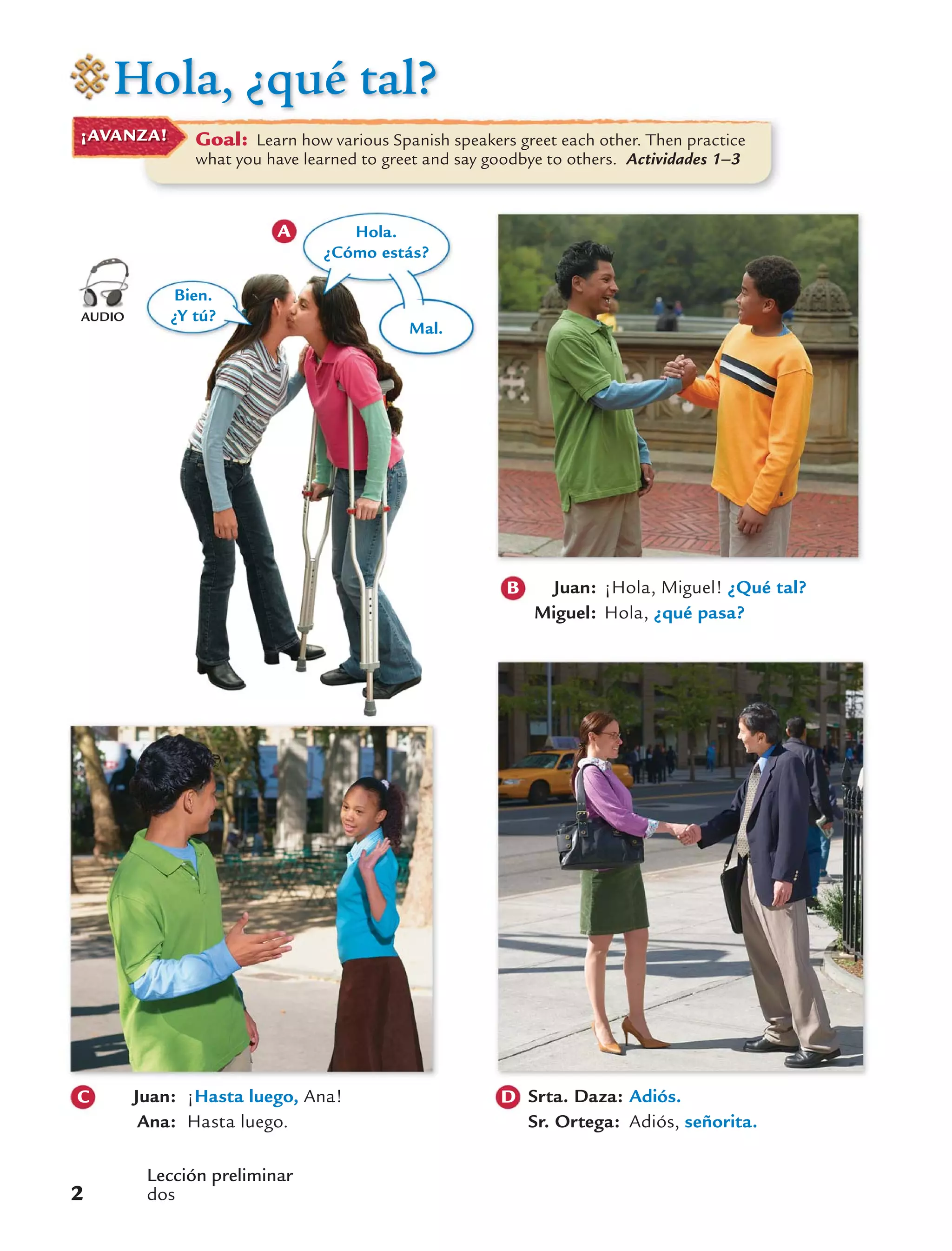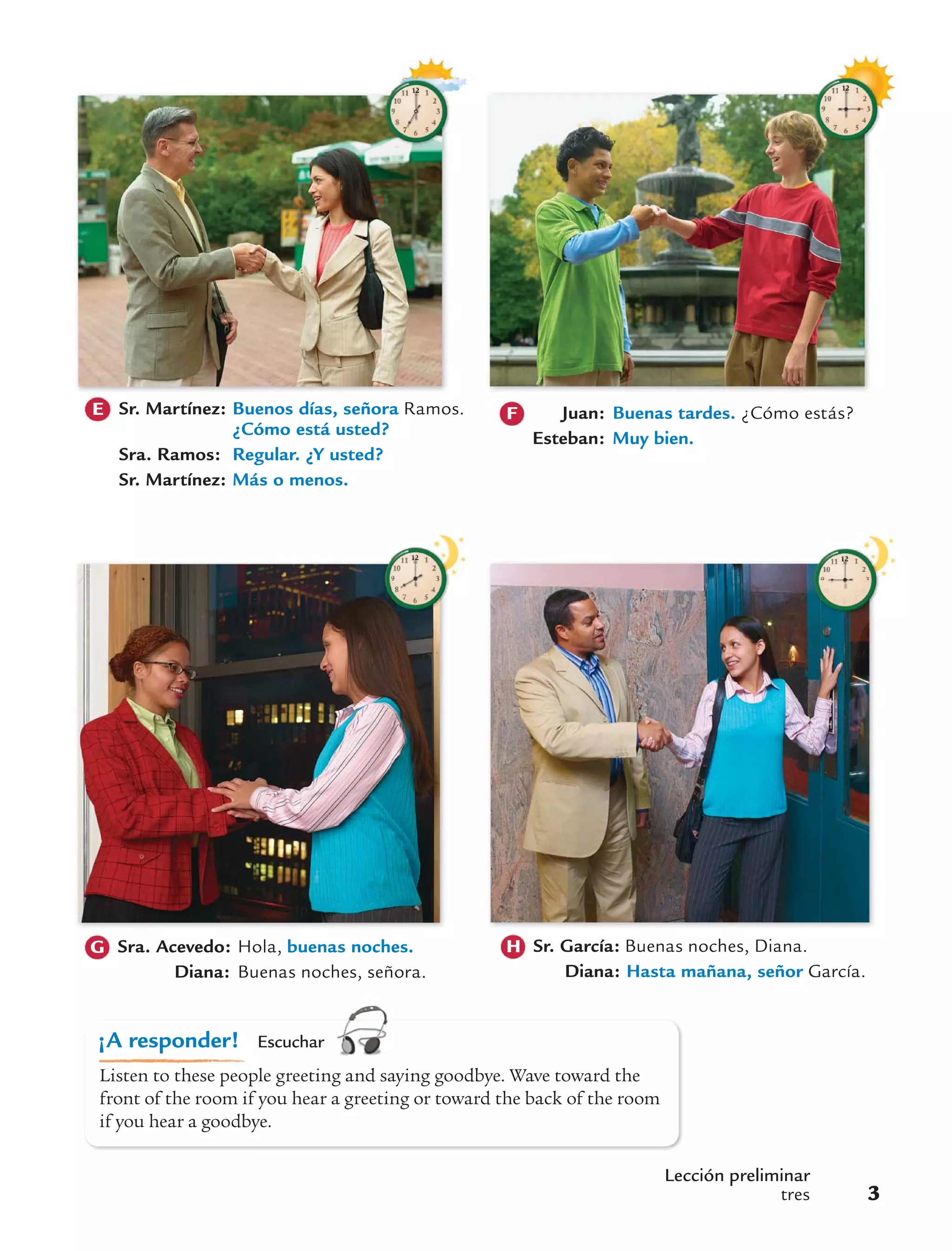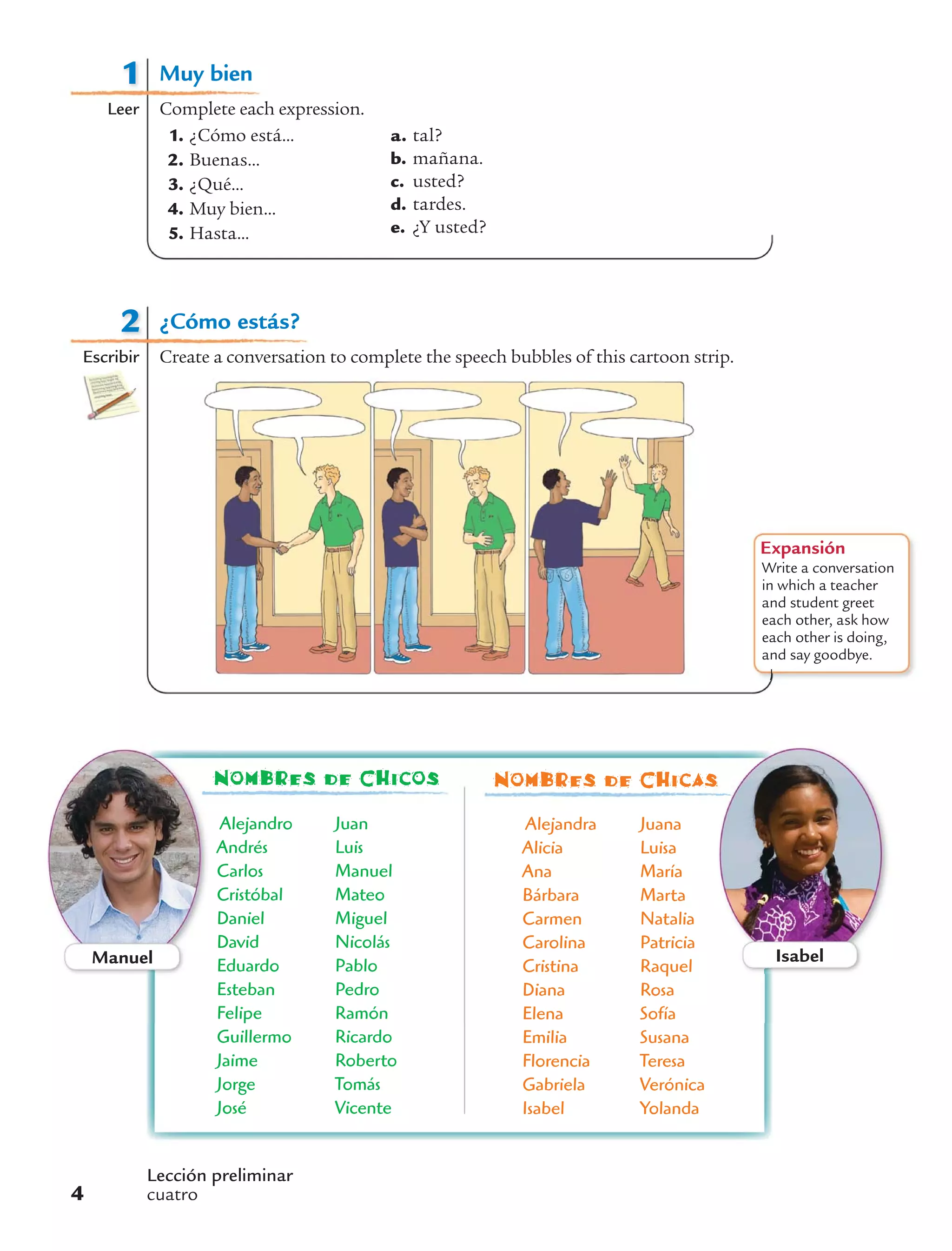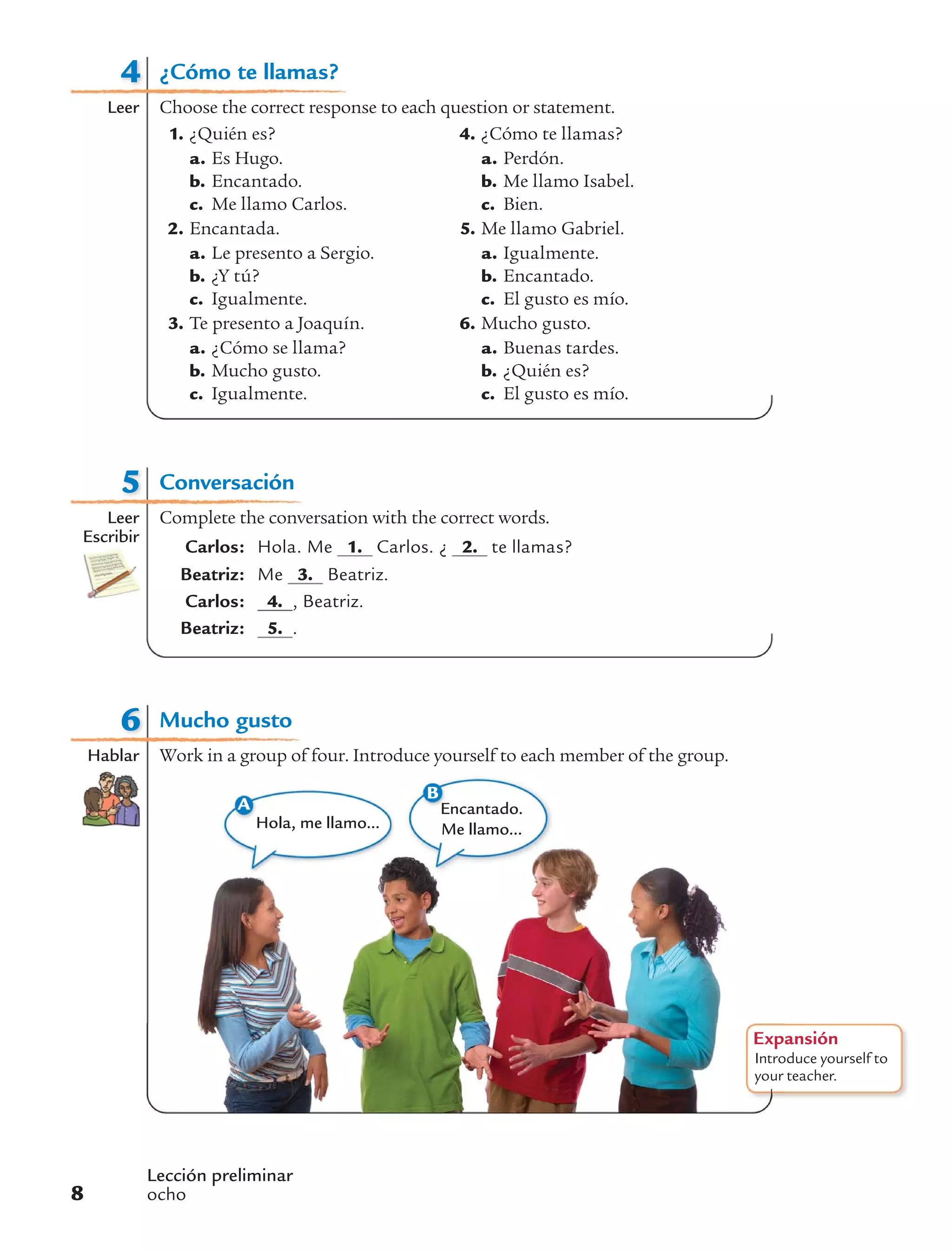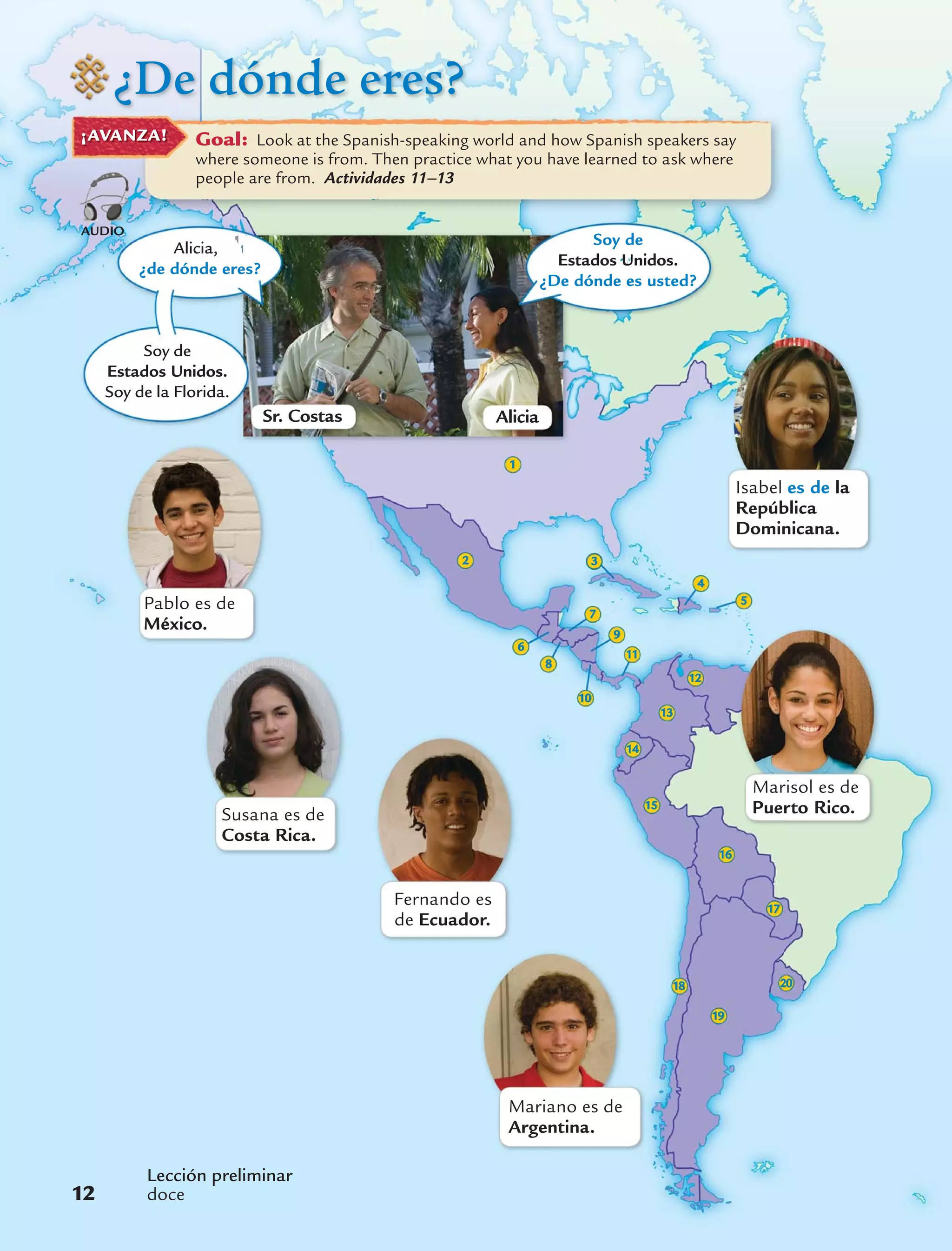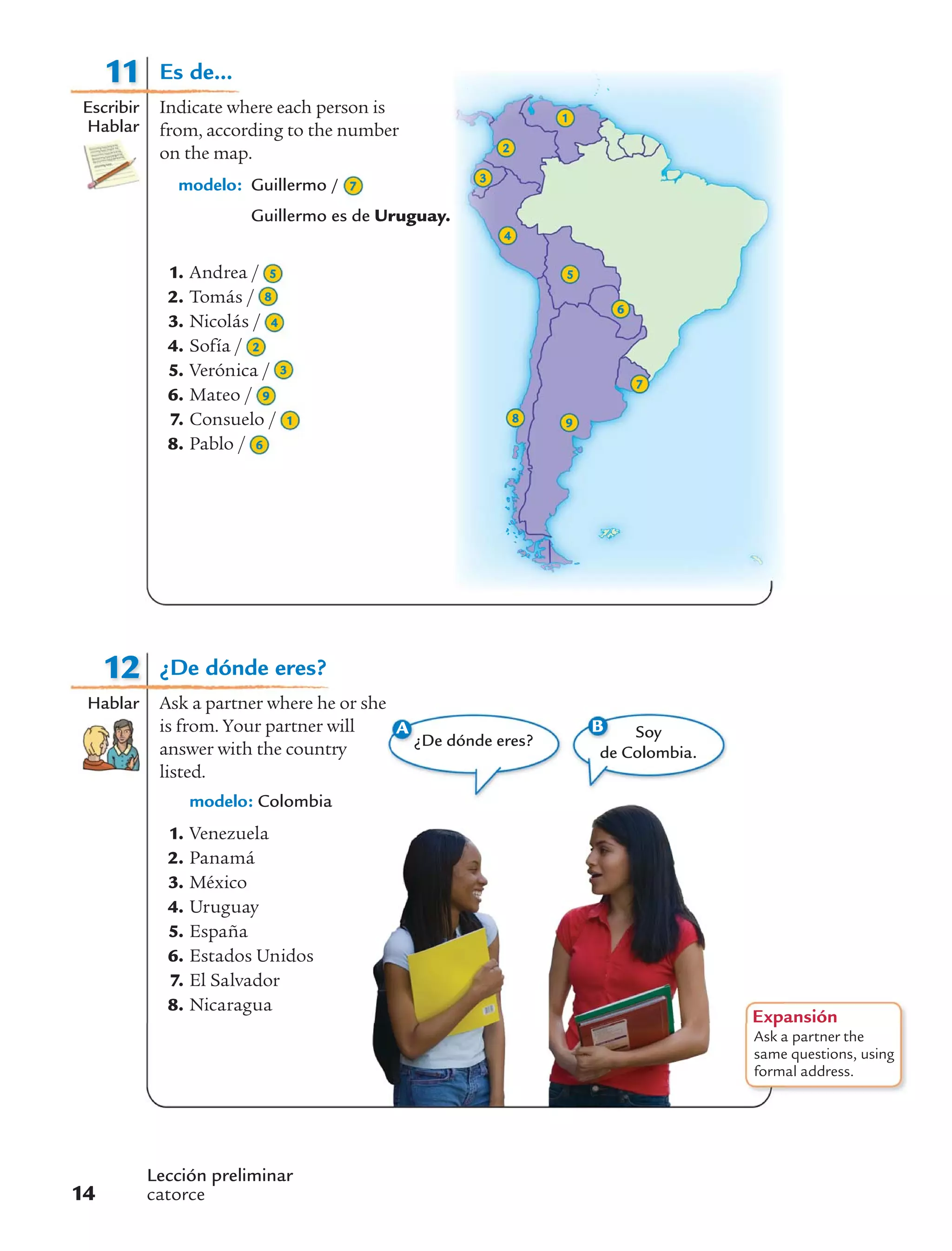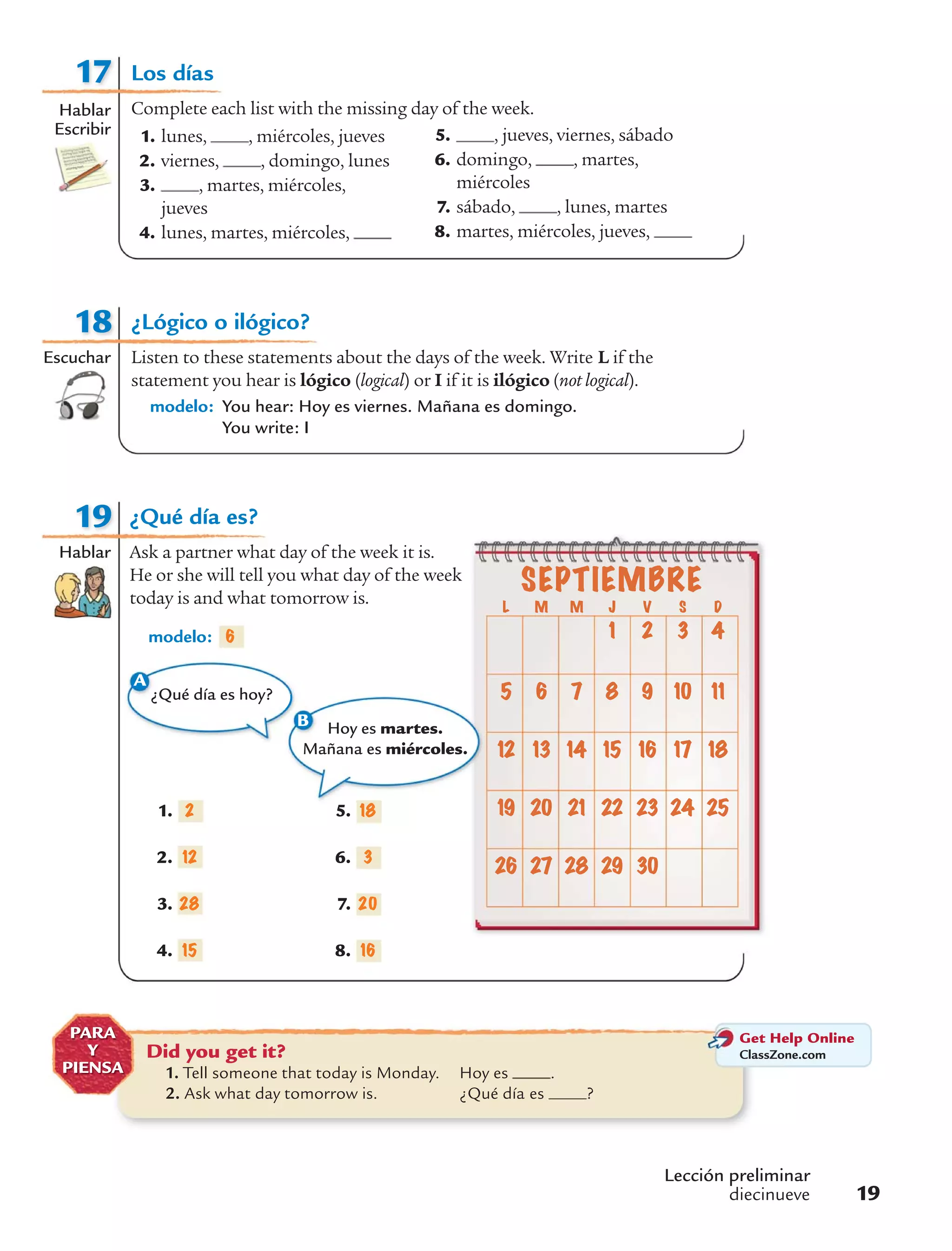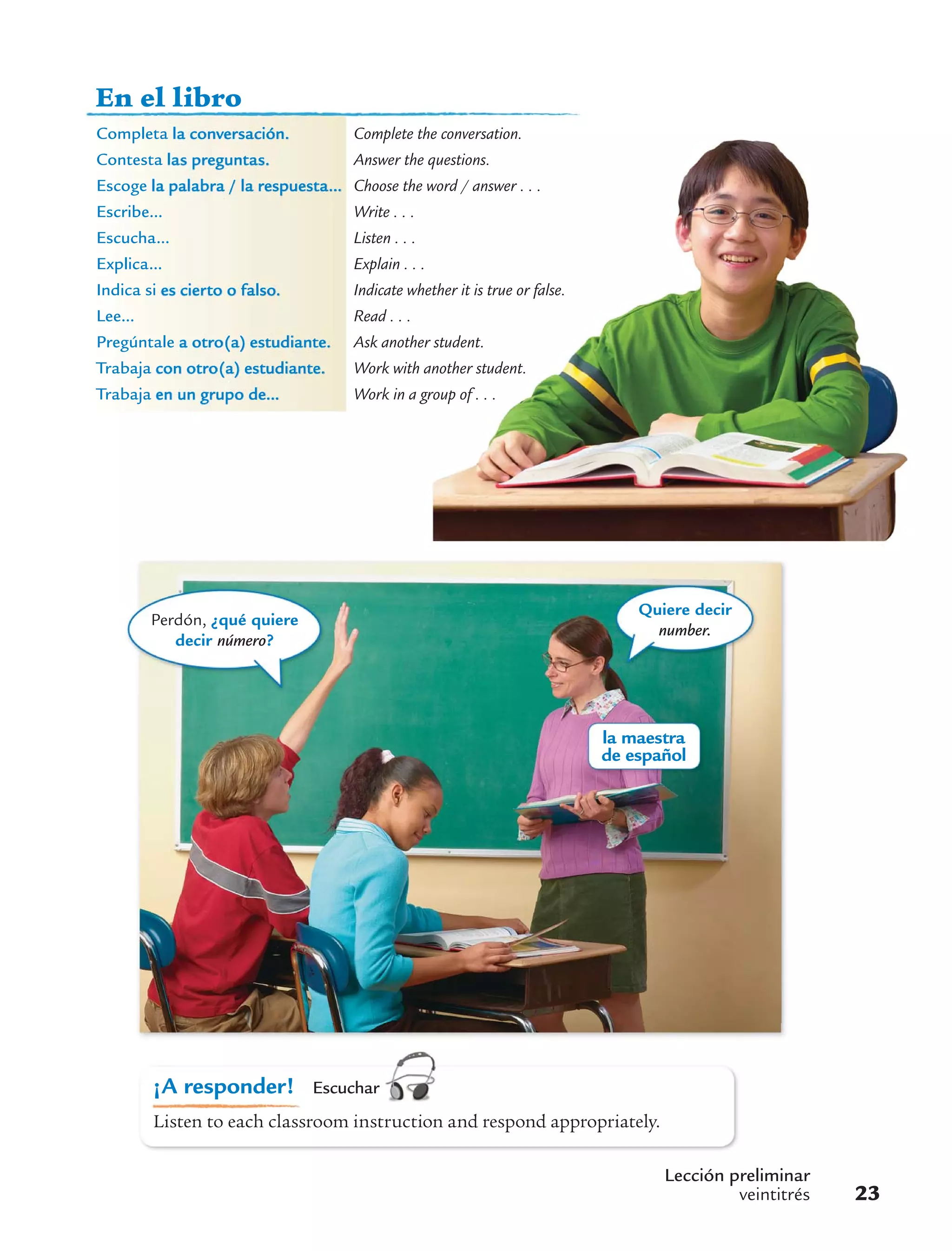Este documento presenta información sobre cómo saludarse y presentarse en español. Primero, explica cómo saludarse y despedirse usando expresiones formales e informales. Luego, enseña cómo presentarse a uno mismo y a otros, así como preguntar y decir el nombre de alguien. Finalmente, cubre cómo preguntar de dónde es alguien y nombrar países hispanohablantes.


